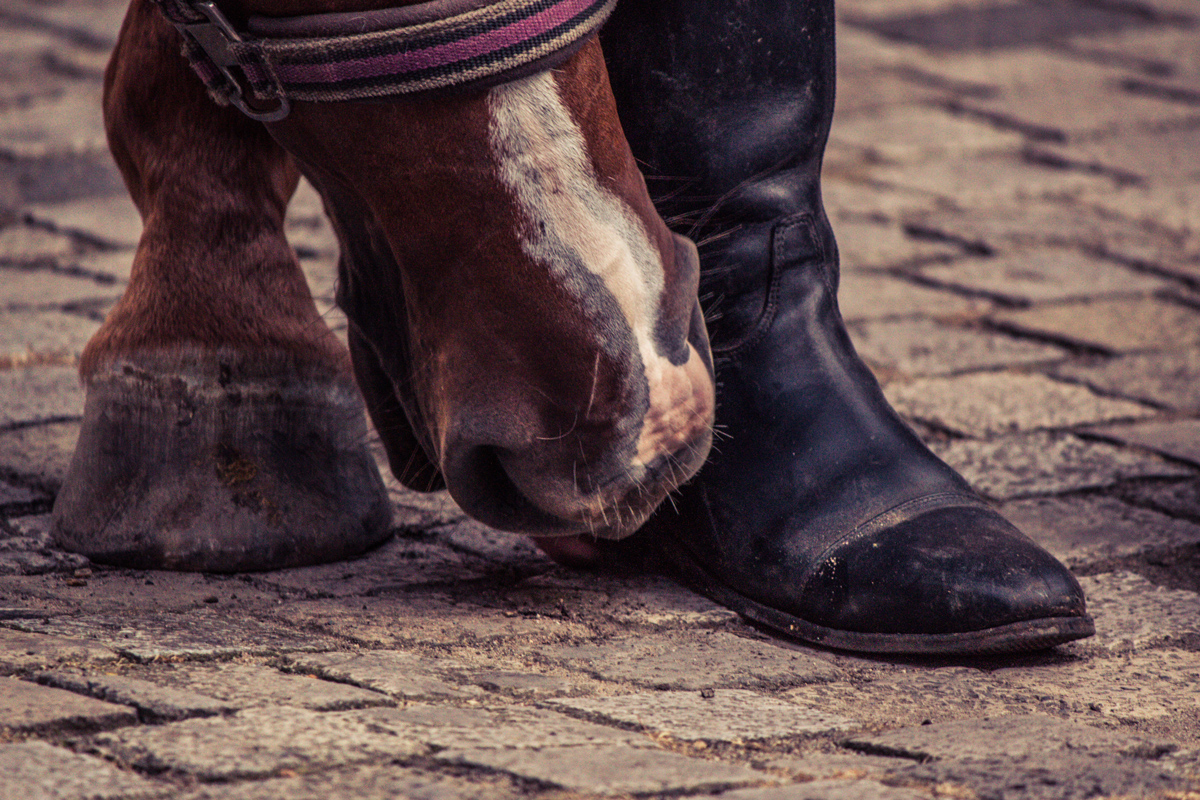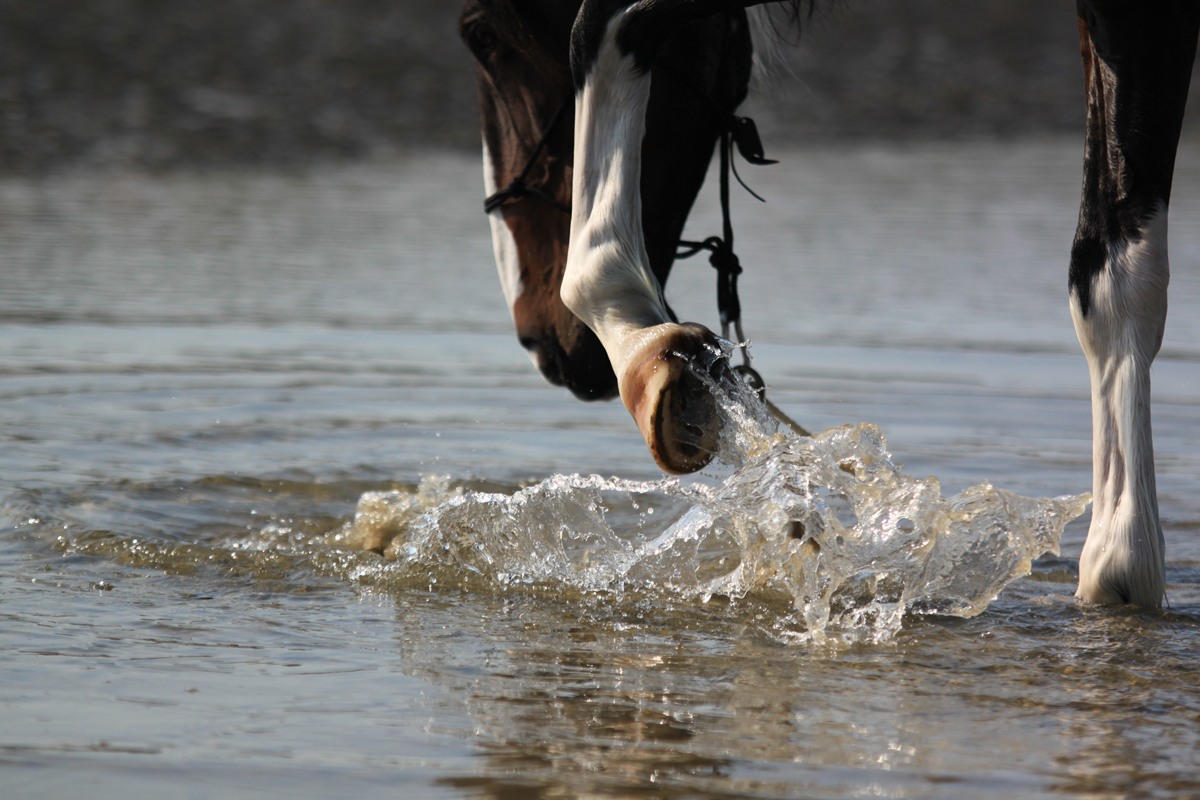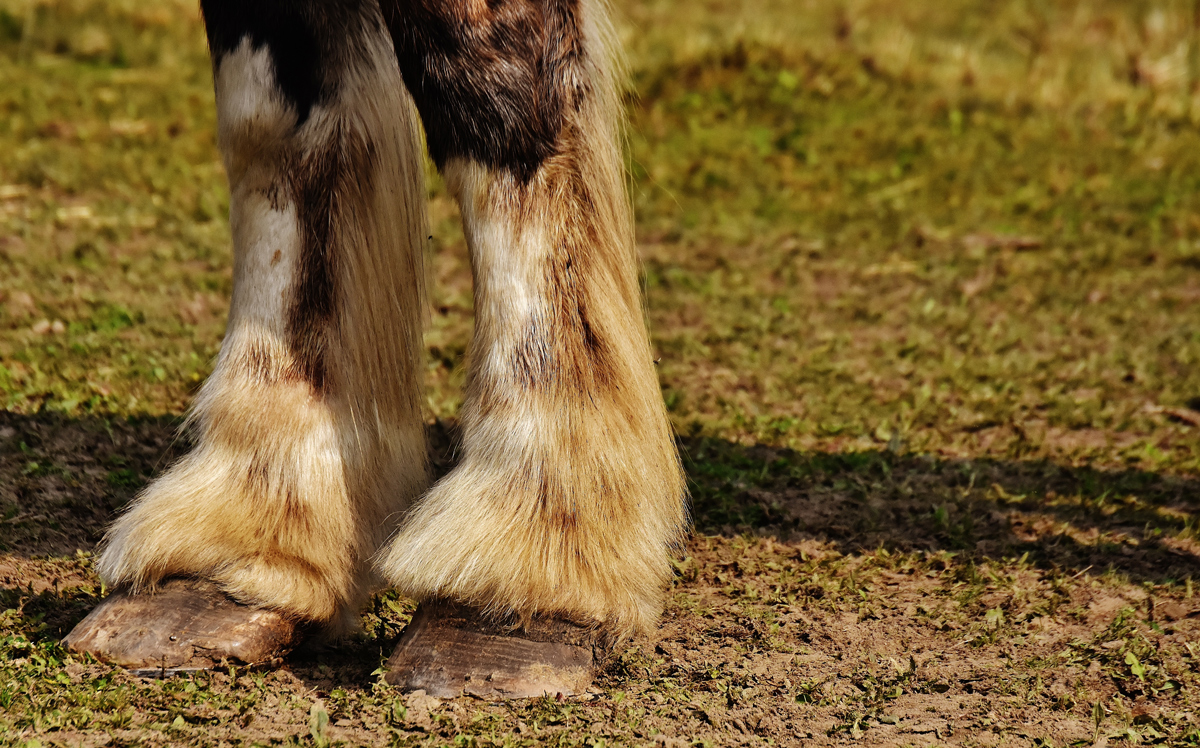As a responsible horse owner, you want to be able to spot the signs of injury at the earliest opportunity, so that you can treat it before it turns into something more serious.
If you see your horse in distress or showing lameness, a good place to start is the hooves.
Horses’ feet are small and highly complex parts of their anatomy, and usually an accurate diagnosis of any issues requires a thorough examination by an expert.
But having a basic understanding of the most common hoof problems will inform whether you need to seek out a vet.
Some hoof problems can be managed at the stable as long as you take early action – if you don’t, you could find yourself with a hefty vet bill on your hands, which may force you into claiming on your horse insurance.
Let’s look at some of the common hoof problems and what you should do if you encounter them in your horse.
Thrush
Thrush is smelly and black but it doesn’t cause lameness so unless you physically lift up your horse’s hoof, you might not spot it immediately.
The frog is the softest and most flexible horn on the foot and one which can easily become infected with thrush. You’ll see black, slime oozing from the frog if feet have not been picked out properly.
To eradicate thrush from the stable completely you may need to review your cleaning routines.
Horse and Hound suggests you should scrub the frog with warm water and Hibiscrub before applying an antimicrobial spray to create a waterproof barrier.

Sheared heels
Unlike thrush, sheared heels are incredibly painful for a horse, so lameness is expected.
It tends to be worse when the horse is walking or working on soft surfaces, with the shape of the foot putting direct pressure on the affected area.
Sheared heels are caused by a structural breakdown between the heel bulbs. They often result from untreated cases of thrush – sheared heels make it almost impossible to clean the affected foot properly.
Again, a good stable routine is key to treating the infection – but foot balance is essential for managing sheared heels. If the horse is showing signs of lameness and discomfort, seek your vet’s advice on pain management.
Bruising
Horses that live in a stable may experience hoof injuries from time to time, especially if they accidentally kick the wall or stable door. Look for signs of lameness, which may indicate bruising.
It’s easy to spot on white hooves but not so easy on black ones. Ask the farrier to check if you’re unsure to stop the problem getting worse.

Rings on the hoof wall
It can be difficult to diagnose a cause for rings on the hoof wall – it can be down to changes in the horse’s environment where the growth of the horn slows down or speeds up, a direct trauma leaving a mark in the horn, or something else that has caused your horse stress.
If hoof rings are visible, it suggests the horse has been stressed for quite some time already. Therefore, it’s wise to take precautionary measures to prevent hoof rings recurring, like being aware of a horse’s surroundings and potential stressors.
The good news is that horse rings are often superficial and will be dressed off when the feet are trimmed or shod. But it’s responsible to make sure that whatever caused the rings in the first place has been dealt with.
Hoof issues generally respond well to good nutrition and consistent hoof care. A horse's diet should be evaluated to ensure he is getting enough biotin, iodine, chelated zinc and methionine; all of which assist with hoof health.
Cracks
Hoof cracks develop for many reasons. Some are superficial, some are serious, and either can be permanent. Diagnosing what type of damage you’re dealing with will often require an expert eye.
A close inspection of the horse's feet reveals a dark fissure creeping from the ground up. Your vet can confirm if it is superficial or something more serious.
Ensure that feet are kept in balance and toes are not left unkempt for too long.
Large cracks or those that appear at the coronary band could well be serious, while horizontal cracks generally result from a trauma or an old infection that has blown out the coronary band.
Cracks should be kept clean, with an antibacterial topical treatment applied to the split to reduce the chance of infection.

Horse hoof rules
We’ve all heard the adage ‘no hoof, no horse’, and taking care of your horse’s hooves is an important part of their overall care.
So what are the top mistakes owners make when it comes to their horse’s hooves? Horse and Rider explains:
- Waiting too long between farrier visits - the ideal time is between four and six weeks of farrier visits.
- Ignoring hoof care on a daily basis - if your horse lives in the stall full time, it’s doubly important to clean out their feet every day.
- Poor turn-out conditions - mud-resistant footing will help avoid conditions like abscesses and thrush becoming a problem.
- Not calling a professional - horse foot care is not something for the inexperienced. Make sure you call in a professional farrier to give your horse the care and attention it deserves.
- Returning to old habits - if you have managed to find a shoeing strategy that works, stick to it. Returning to old ways to save money will only result in expensive issues further down the line.
Horse insurance through Equesure
Whatever the condition of your horse’s hooves, it’s crucial you have adequate insurance in case of an expensive vet visit.
With over 60 years’ experience in the equine insurance market, our team of specialists can offer you a bespoke insurance policy with options tailored for the particular needs of your horse.
From veteran horses to thoroughbred horses used for competition, we can help you protect your forever friend against a wide range of potential risks.
We can also arrange horse rider cover for you, as well as cover for your horse transportation needs.
If you protect your horse with horse insurance from Equesure you could benefit from the following:
- Vets’ fees up to £4,500 per incident, but with unlimited number of claims within the policy year.
- Public liability cover up to £5 million available.
Give our equine insurance team a call today on 01480 220089 – they’ll be happy to discuss the variety of horse insurance policies available to suit your individual requirements and budget.
Get a quick quote today.
Policy benefits and features offered may very between insurance schemes or cover selected and are subject to underwriting criteria. Information contained within this article is accurate at the time of publishing but may be subject to change.






